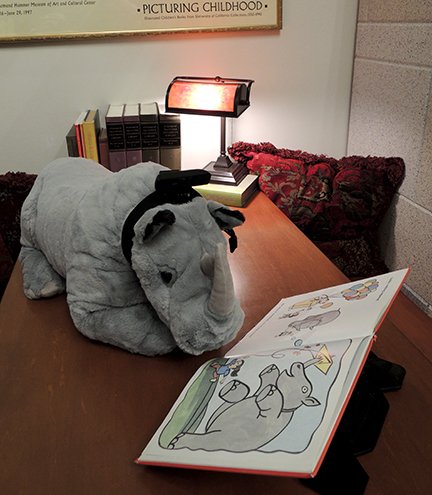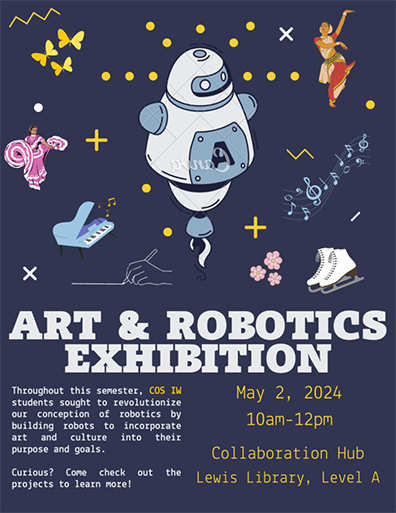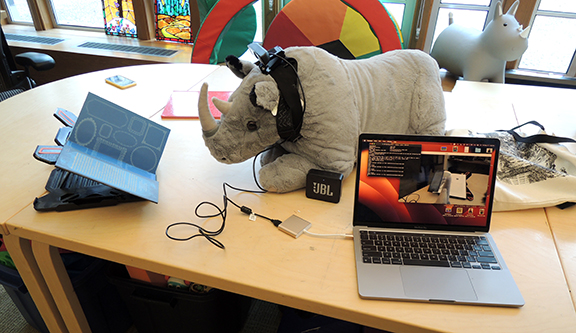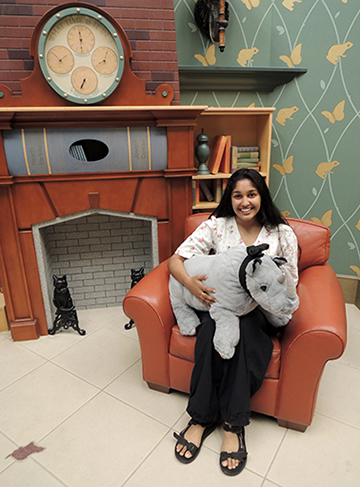 ARE YOU READY FOR IT? As you might recall from our recent sneak peek, we joined forces with our friends at Science Outreach at Princeton University and the Department of Chemistry to host a fantastic celebration of science and the lyrics, visuals, and overall awesomeness of Taylor Swift! The crowds were enchanted, bejeweled, and the alchemy exceeded our wildest dreams! How did we mastermind this event? Dear reader, it was a wonderland!
ARE YOU READY FOR IT? As you might recall from our recent sneak peek, we joined forces with our friends at Science Outreach at Princeton University and the Department of Chemistry to host a fantastic celebration of science and the lyrics, visuals, and overall awesomeness of Taylor Swift! The crowds were enchanted, bejeweled, and the alchemy exceeded our wildest dreams! How did we mastermind this event? Dear reader, it was a wonderland!
The event was divided into two parts: 1) hands-on activity tables; and 2) an auditorium show. Part one featured five hands-on demonstration tables that uniquely represented a Swift song. This part of the event was led by the amazing Paryn Wallace, Associate Director of Science Outreach, and a talented team of Princeton University undergraduate and graduate student volunteers from Science Outreach at Princeton University.

Front row, left to right: Davis Hobley, Adrija Kundu, Meghana Bhupait, Paryn Wallace, Maddie Bland. Back row: Back row, left to right: Amalia Nevarez, Mell Aguiar, Aryan Gupta, Kennedy Casey, Zaighum Nagra, Jeffrey Asiedu-Brako, Emma Petzold, Ash Reddy
At the “Shake it Off” table, kids could learn about non-Newtonian fluids by examining the curious properties of oobleck as it danced on top of speakers blasting Swift’s music. Nearby was the “Clean” table, where budding scientists could determine the pH levels of various water samples (tap, bottled, rain, etc.) using litmus paper. At the “Blank Space” table, kids learned about chemical reactions as they revealed lemon juice invisible ink messages with a heat source.
One of my favorite tables, however, was “All Too Well.” This classic song is all about memories, so the table featured Nitinol wire. Because of its unique atomic structure, Nitinol wire can “remember” its original shape during temperature changes. It’s pretty astounding to watch. The final hands-on table was “Mastermind,” where we literally brought Taylor’s song lyrics to life as chain reactions of “dominos cascaded in a line.”
Once the tables were thoroughly explored, it was time for part two, the auditorium show (which was, ironically, held in the Taylor auditorium inside the Frick Chemistry Building)! The show was led by the extraordinary Angie Miller,
So Angie talked extensively about the scientific method while bursting hydrogen balloons, making nitrogen clouds, and testing audience predictions of marshmallow cat behaviors in vacuum chambers. Angie invited the young scientists to gaze at line spectra of various gases, created colored fireballs with metal salts and a Bunsen burner, and…in a grand finale…played the “ME!” video for the crowd on the big screen while coordinating larger versions of the previous demos, capping everything off with a six beaker rainbow deluxe version of elephant toothpaste!

Peppered throughout the show were audience trivia questions for friendship bracelet prizes. Before the marshmallow cat demo, for example, I asked the audience if someone could name Taylor’s three cats. They sure could! First names AND last names (though I was secretly waiting to hear someone shout “Dibbles!”).
The auditorium show’s crescendo was the “ME!” video, but we had one more fantastic surprise in store for the crowds that day…a cameo appearance by Taylor!

Well, that’s not ACTUALLY Taylor Swift. It’s Princeton University sophomore Margo Mattes! A Politics major and massive Swiftie, Margo gamely volunteered to play Tay and take photos with the kids. She was so utterly fantastic, we can’t thank her enough for giving her time and exuberance to this event!
As the happy crowd exited the building, we handed out friendship bracelet kits made out of UV beads. These plain beads react with sunlight and change to rainbow colors. Just a little extra TS science to take home!

I can’t even begin to express my gratitude and appreciation to everyone who made this event possible. Thank you to the students from Science Outreach at Princeton for your ideas, boundless energy, and time. Margo Mattes, thank you for bringing your sweet brilliance and enthusiasm as Miss Americana. And a massive shout out to event masterminds Paryn Wallace and Angie Miller. You were so game to try this, and Katie and I absolutely loved working with you!

From left to right: Paryn Wallace, Dana Sheridan, Katie Zondlo, Angie Miller
Event images courtesy of Daniel Wang

























 Pssst! For you eagle-eyed Swifties, did you also spot a very special house in
Pssst! For you eagle-eyed Swifties, did you also spot a very special house in 
 As you can see from the set up below, Rey wears a camera on his head, which is in turn connected to a laptop. When you place a book in front of Rey’s nose, the program will scan the page and read the book aloud to you! Flip the page, and the story continues at your pace.
As you can see from the set up below, Rey wears a camera on his head, which is in turn connected to a laptop. When you place a book in front of Rey’s nose, the program will scan the page and read the book aloud to you! Flip the page, and the story continues at your pace. While the concept appears very simple, it turns out that programming a robot to read can get rather…complicated. I caught up with Aneekah to ask about her inspirations for this adorable project.
While the concept appears very simple, it turns out that programming a robot to read can get rather…complicated. I caught up with Aneekah to ask about her inspirations for this adorable project. Hi Aneekah! Tell us a little about yourself!
Hi Aneekah! Tell us a little about yourself!